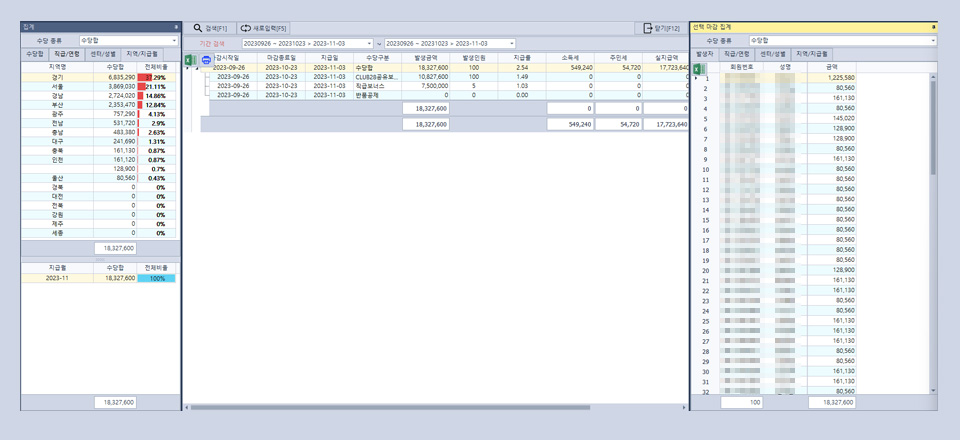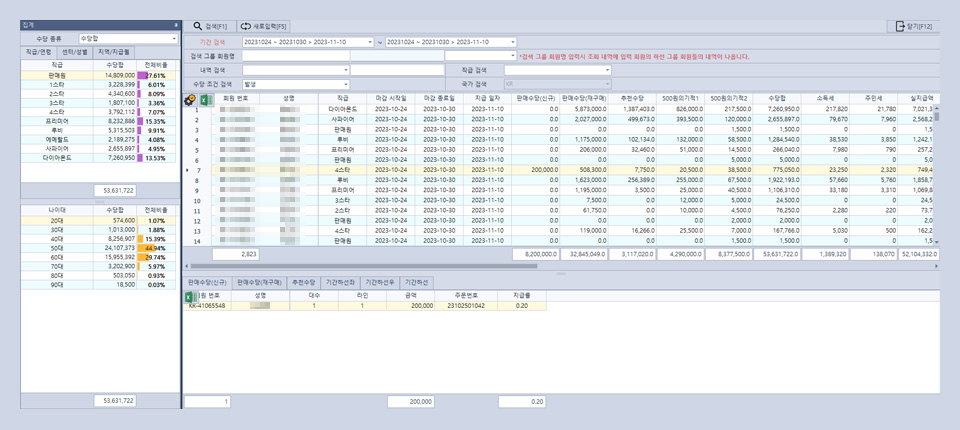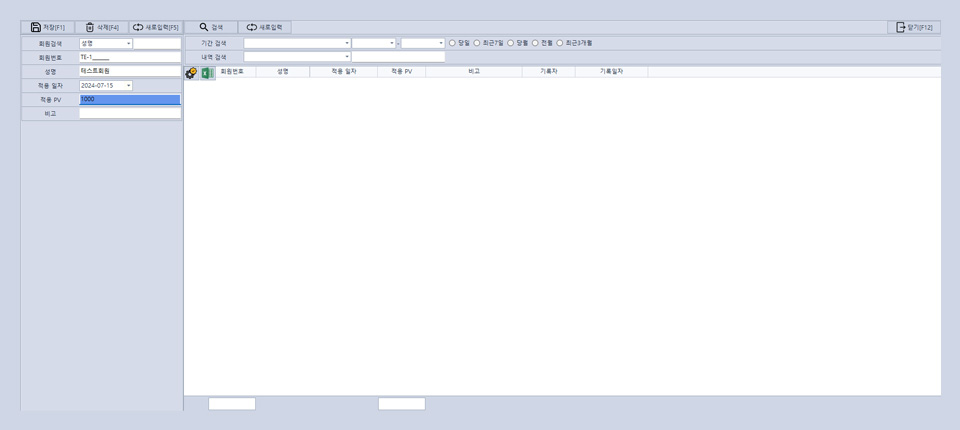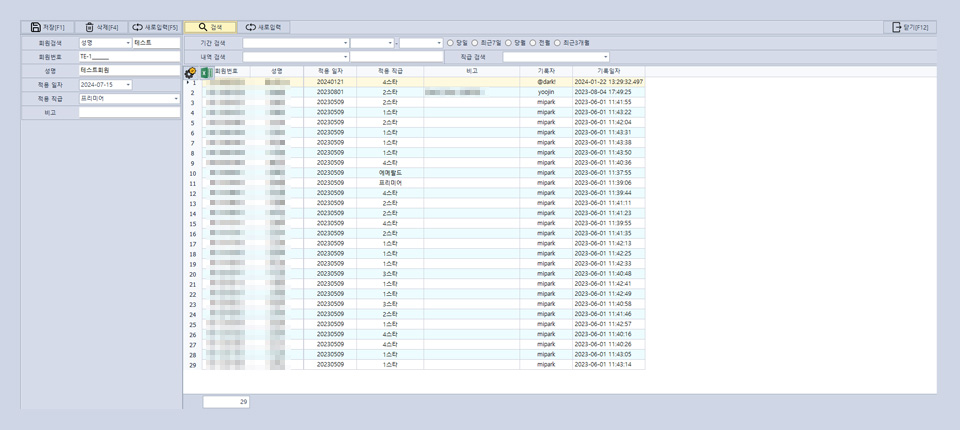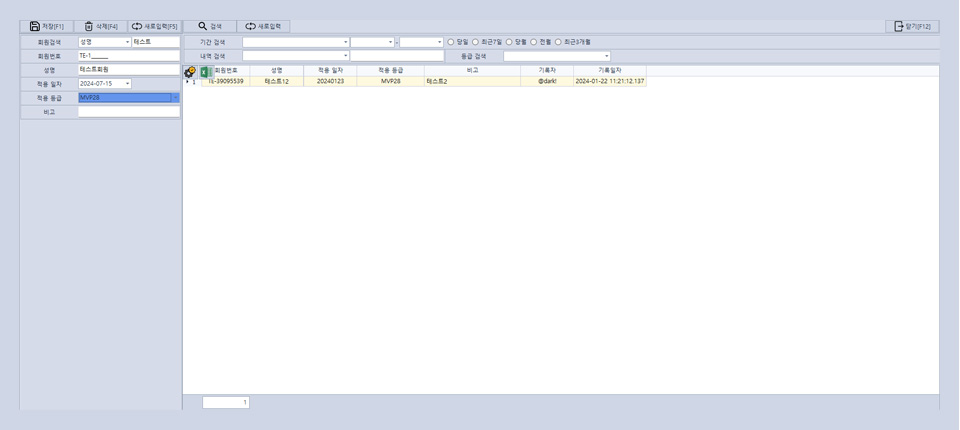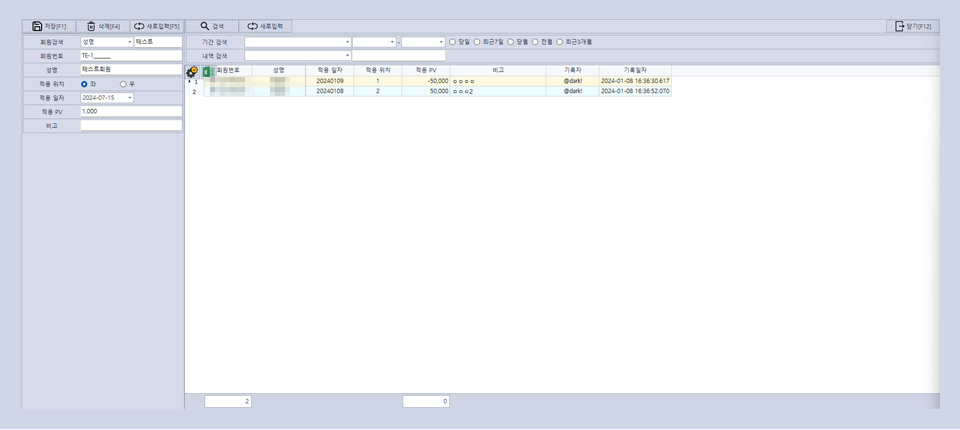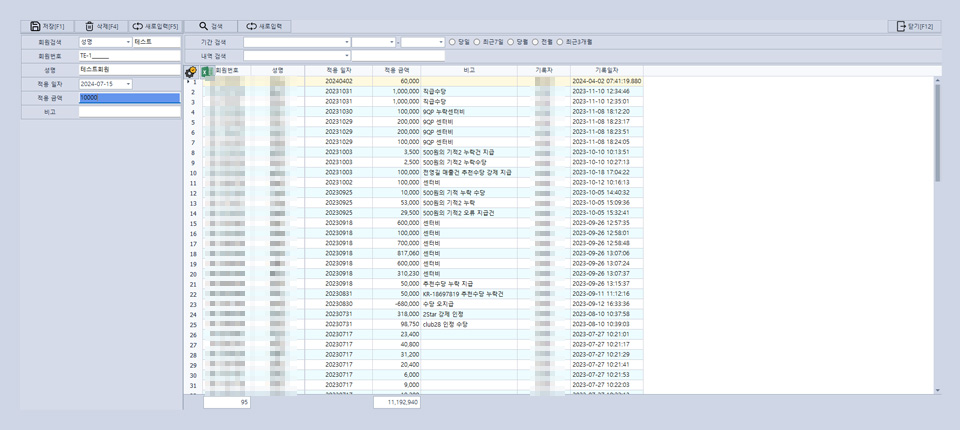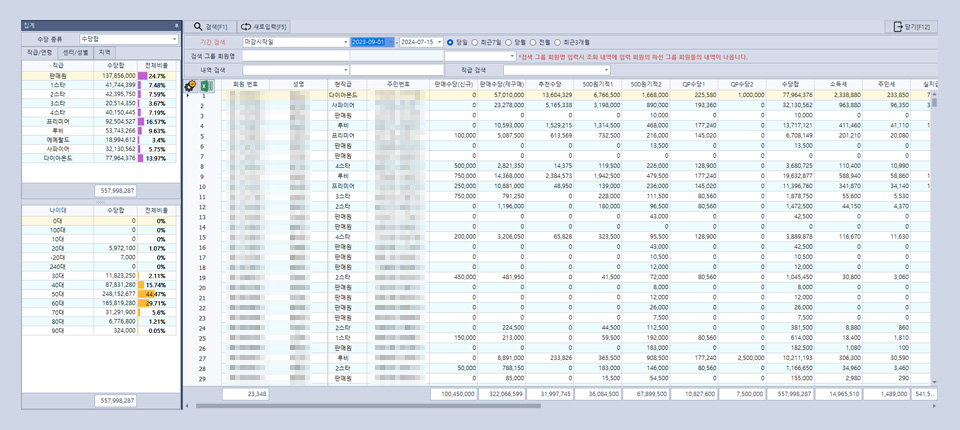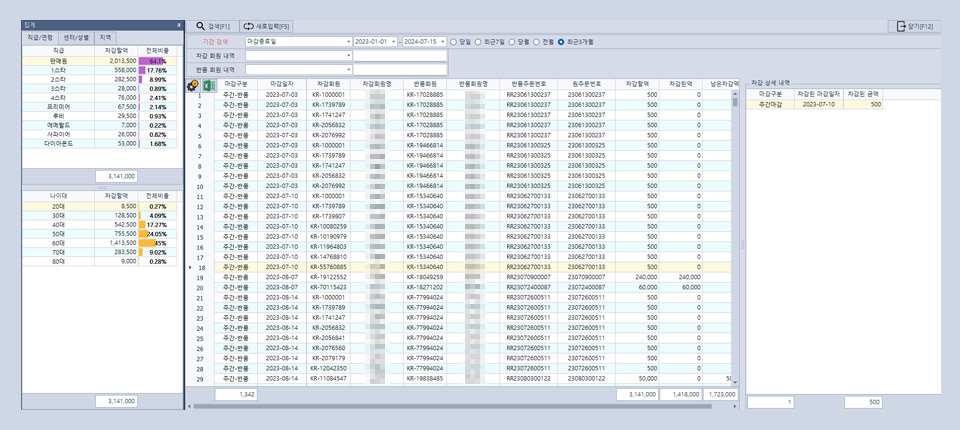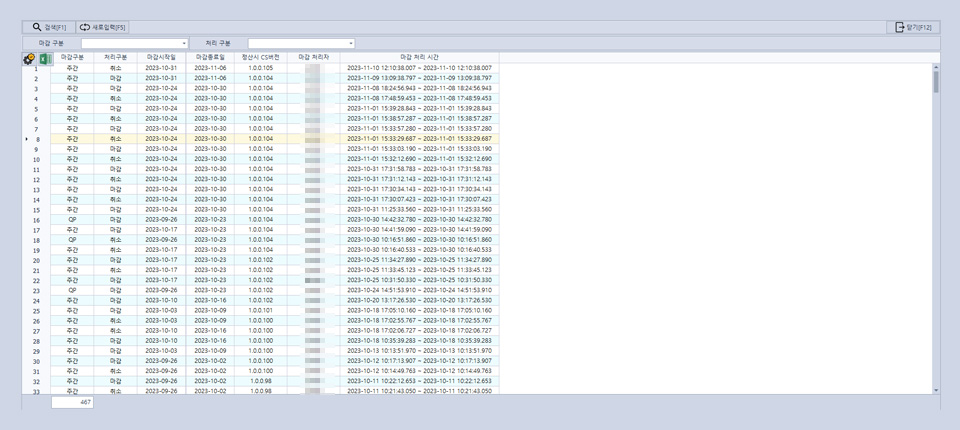
1. Commission Closure
- A.The naming and number of closures vary according to each company's marketing.
- B.The method for closing all types of commissions is the same.
- C.When executing a closure, the start date of the closure period is automatically entered as the first sale date if it is the initial closure, or the day after the last closure date if there have been previous closures.
- D.Depending on the closure period such as daily, weekly, periodically, or monthly, you can double-click the end date in the unclosed date section on the right, check the payment date, and click execute closure to proceed with the closure.
- E.If there is a predetermined payment date, it can be automatically entered.
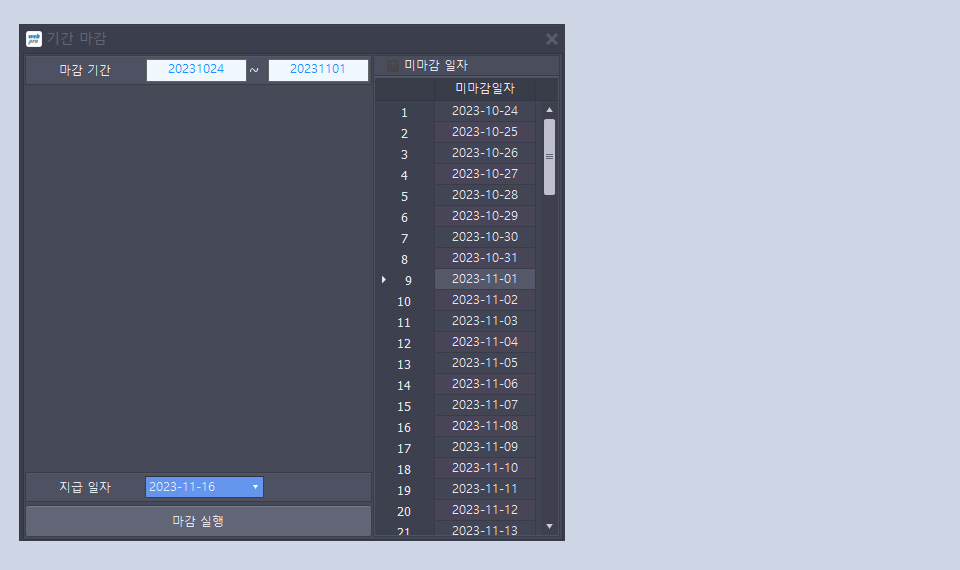

 KOREA
KOREA ENGLISH
ENGLISH CHINA
CHINA JAPAN
JAPAN


